Published March 11, 2021
So you’ve been told to connect with nature for your mental health, quite possibly by me on this very website.
You might be wondering: What does ‘connecting with nature’ actually look like? How do you do it? Is it really as simple as stepping outside and going for a walk?
Well, yes and no. Leaving your hidey-hole where you’ve been sitting in bed eating a family-sized bag of M&Ms for the past three months is the first step—not that I would know anything about that. But if you really want to benefit from spending time in nature, you need to truly engage with your surroundings once you step out the door.
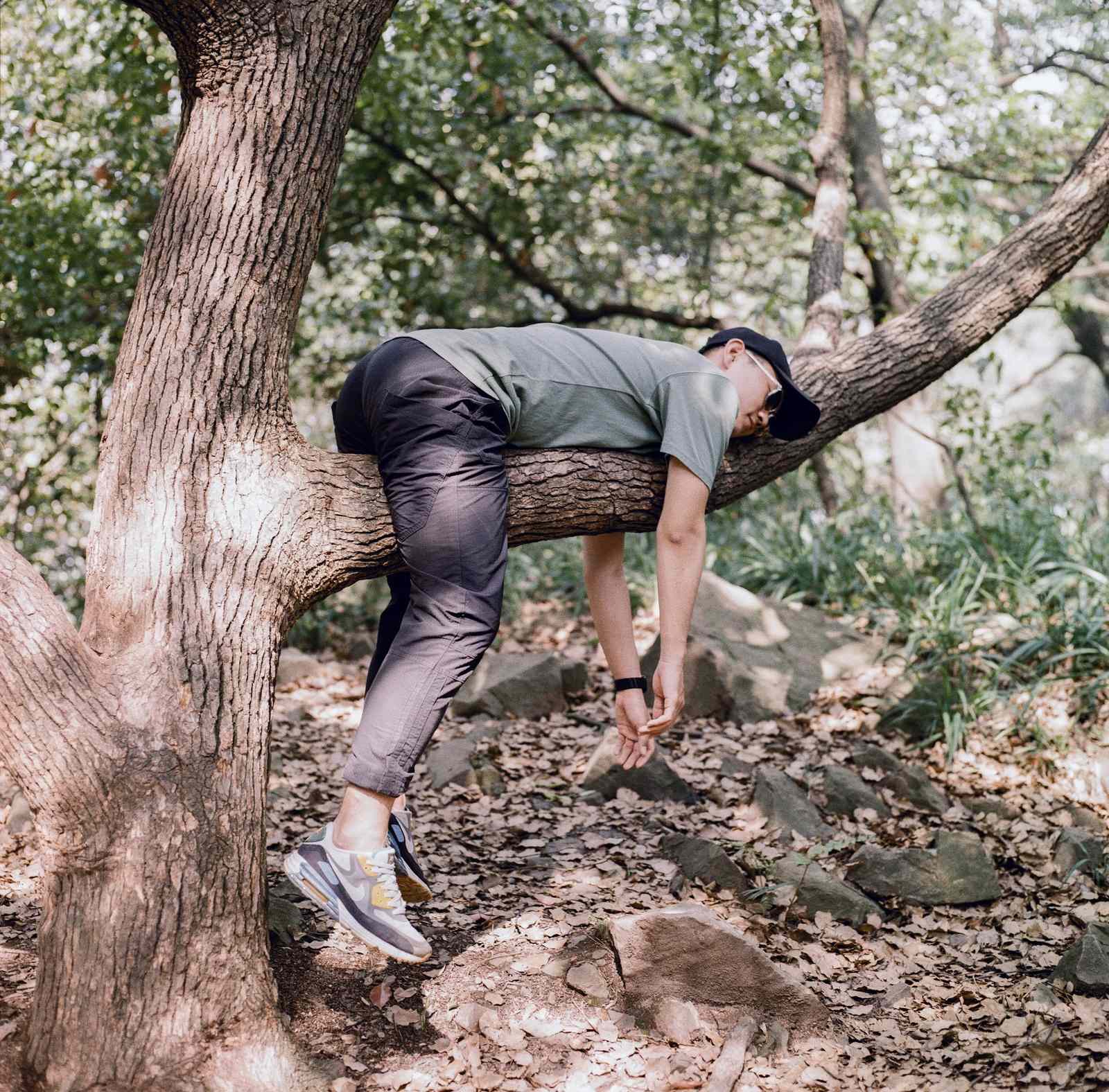
Engaging with nature has kept me (relatively) sane during the pandemic, which is no small feat. The good news is, I’m going to teach you exactly how to connect with nature so that you, too, can enjoy a brief escape from… well, everything.
Here are 5 tips for practicing self-care in nature
1.
Use all of your senses
You’ll be surprised by how much you miss when you aren’t actively paying attention to your five senses.
Getting in touch with your senses can help you be more mindful. Try this exercise:
- What are 5 things that you can see?
- What are 4 things you can feel?
- What are 3 things that you can hear?
- What are 2 things you can smell?
- What is 1 thing you can taste?
Okay, maybe skip the tasting step unless you’re 100% certain those berries aren’t poisonous.
Act like a badly-behaved four-year-old and (gently) touch everything. Touch rough tree bark, silky petals, cool water, powdery sand, spongy moss, whatever you can get your hands on. Close your eyes and experience these everyday things in a new way.
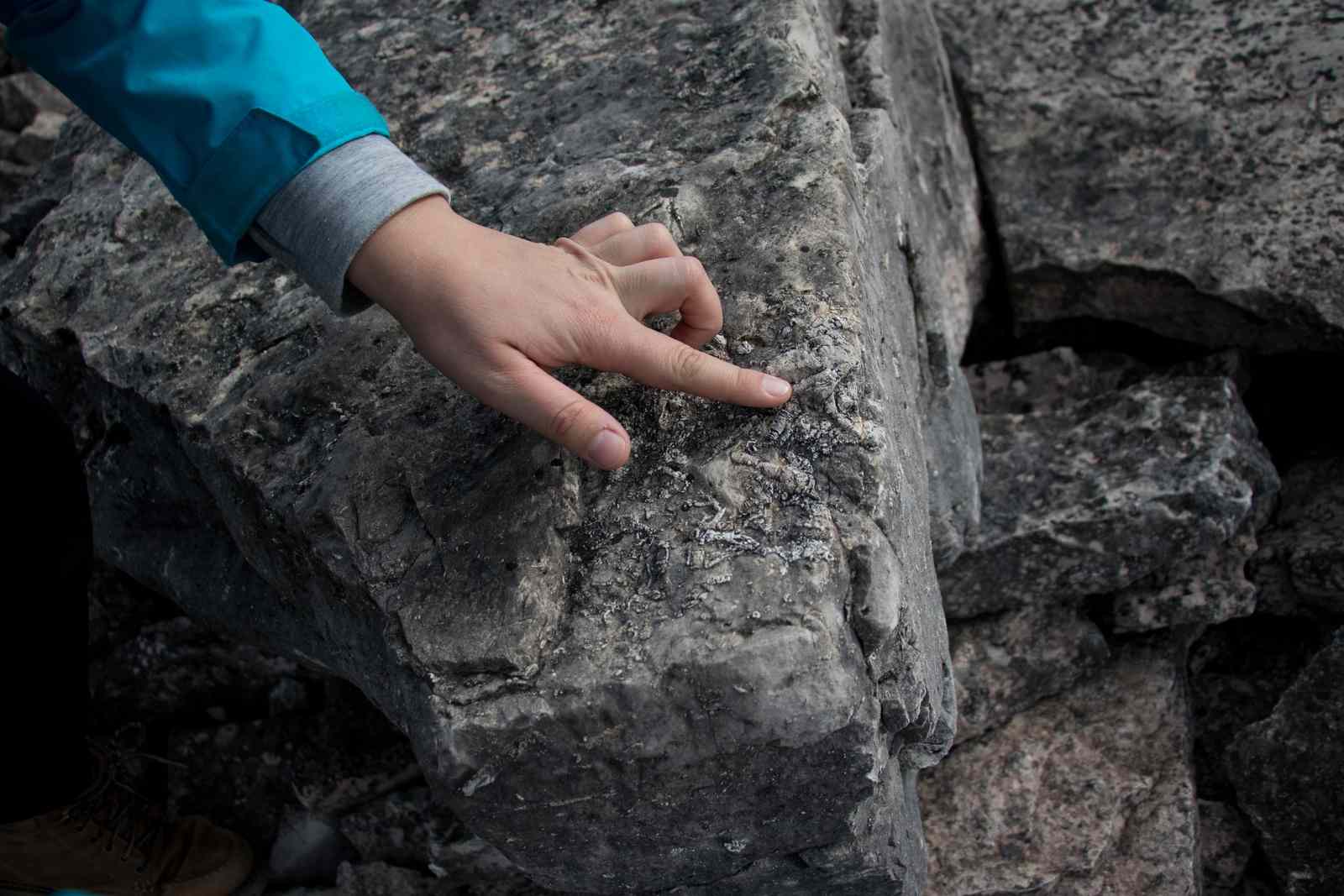
Breathe in the honeyed perfume of wildflowers, the rich scent of decomposing leaves, and the sea-like aroma of another world lying just beneath the surface of a Great Lake.
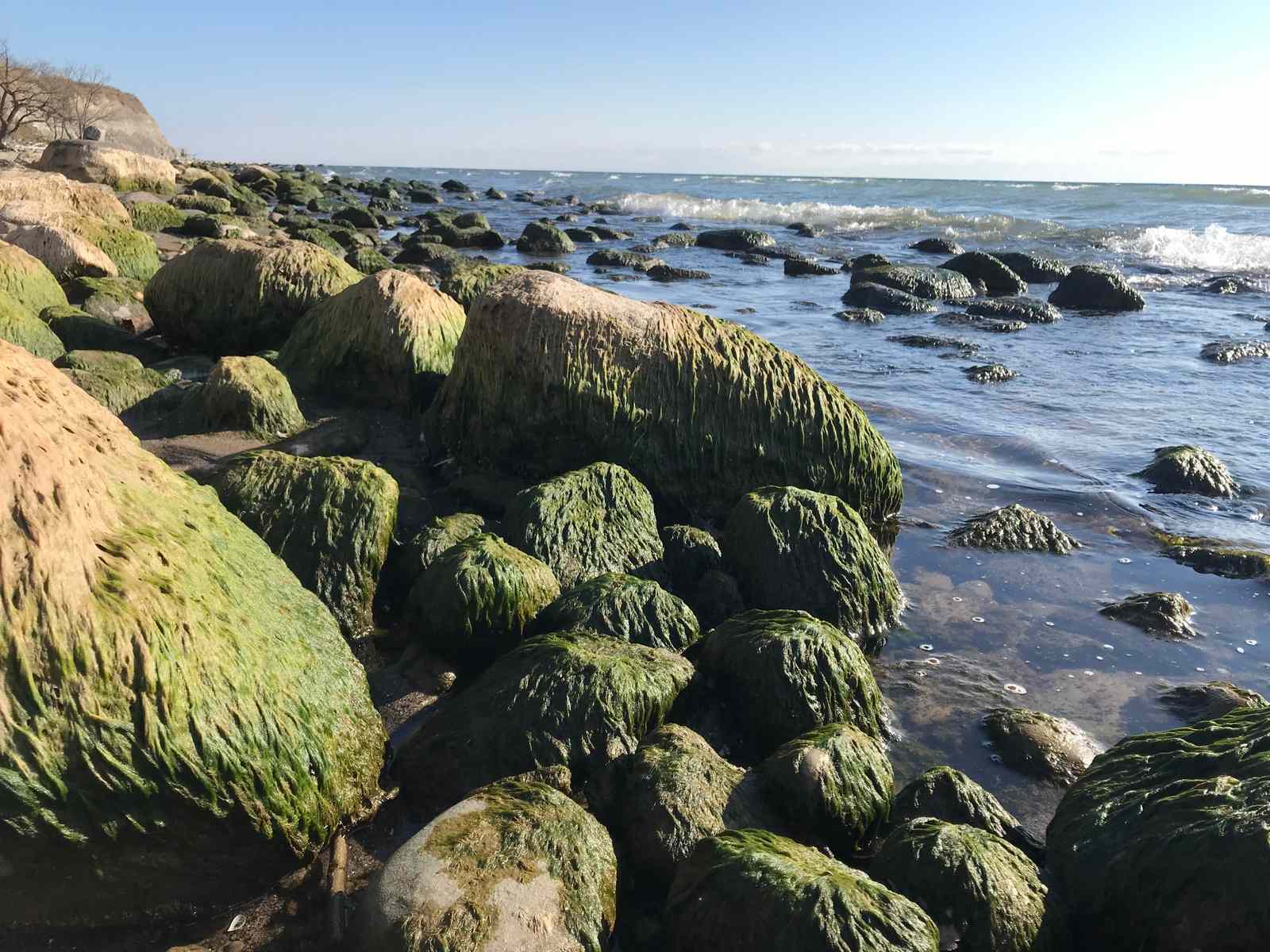
Turn off that true crime podcast and tune in to the Bird Broadcast instead. Not only are bird songs beautiful, but their calls will tell you a lot about what’s happening around you.
For example, did you know that the number of ‘dees’ in a Chickadee’s warning call corresponds to the level of predator threat? If you hear chickadees going absolutely BONKERS with the ‘dees,’ scan the trees and you just may spot a hungry hawk or falcon on the hunt!
2.
Notice the details
As you walk, look up and down. Crouch or step off the path and get close to stuff. I discovered the truly fascinating world of fungi after I began examining the surface of fallen trees and moving leaves aside to see what was underneath.
Seriously, finding fungi feels like embarking a trip to another planet. Just call me ‘Alice’ because I’m in Wonderland (but please, whatever you do, do not eat the mushrooms).
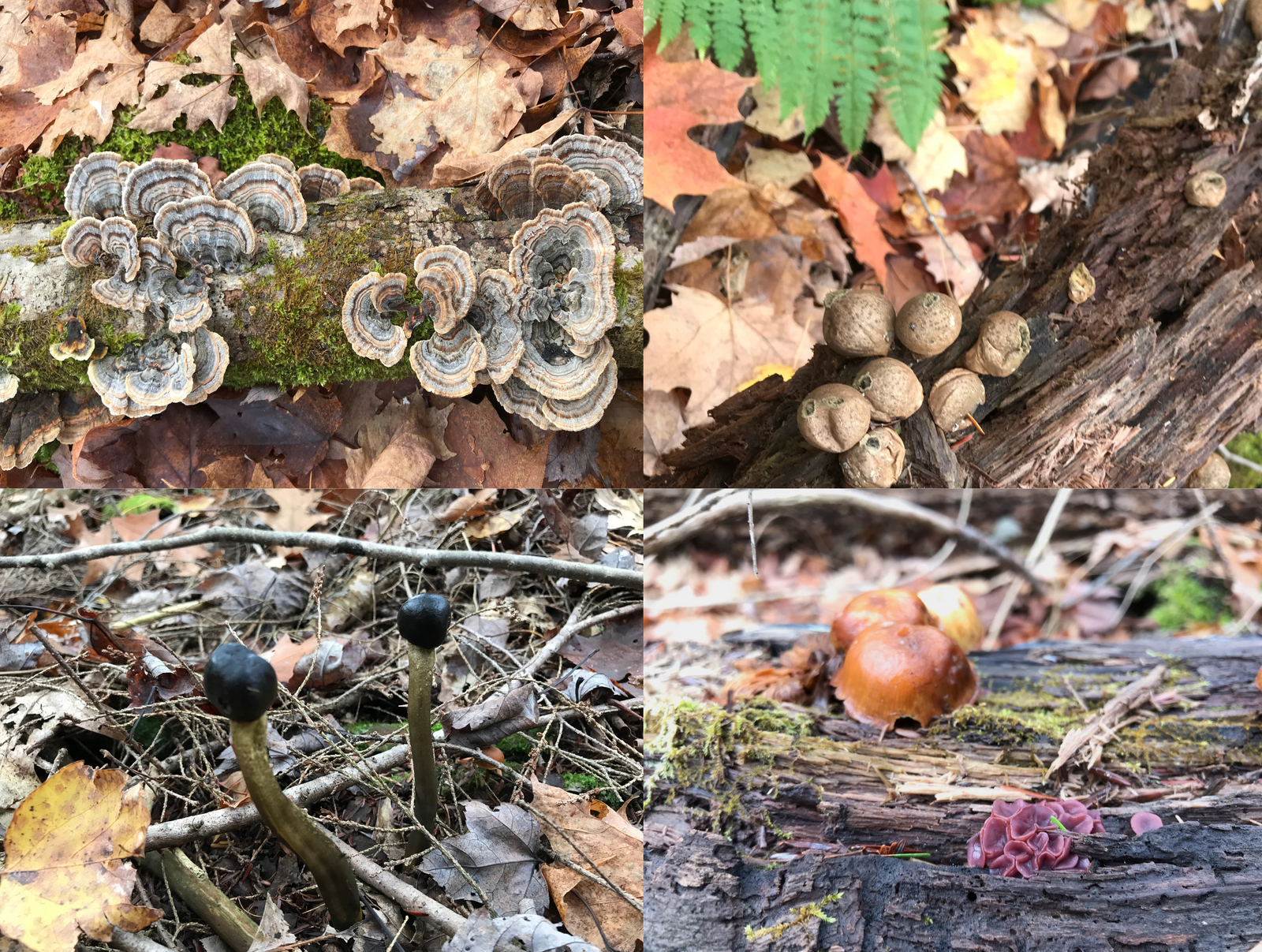
Even the frostiest February holds hidden beauty, like the patterns in ice on a frozen lake.
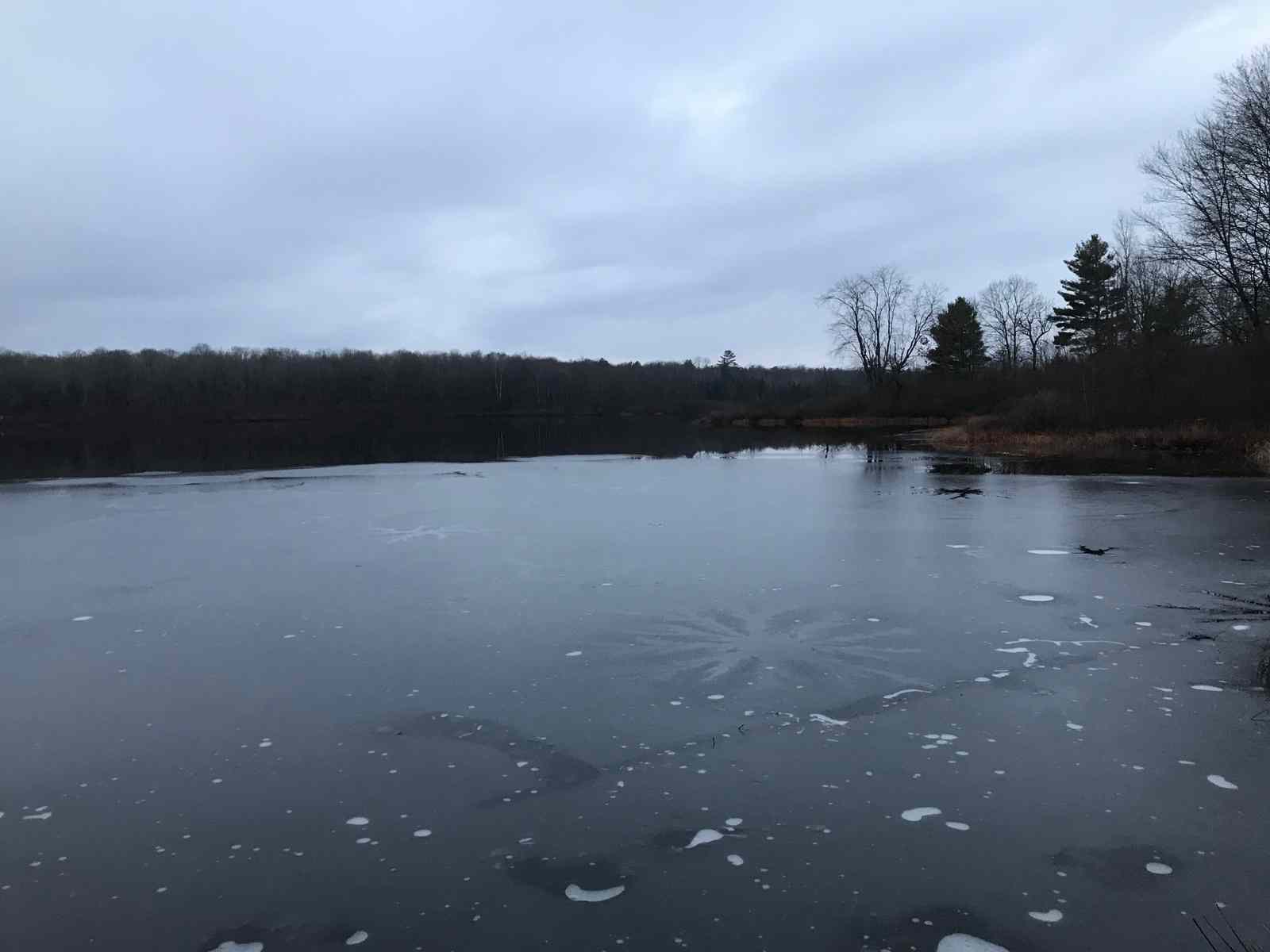
Or snow-coated branches that extend like the antlers of a deer.
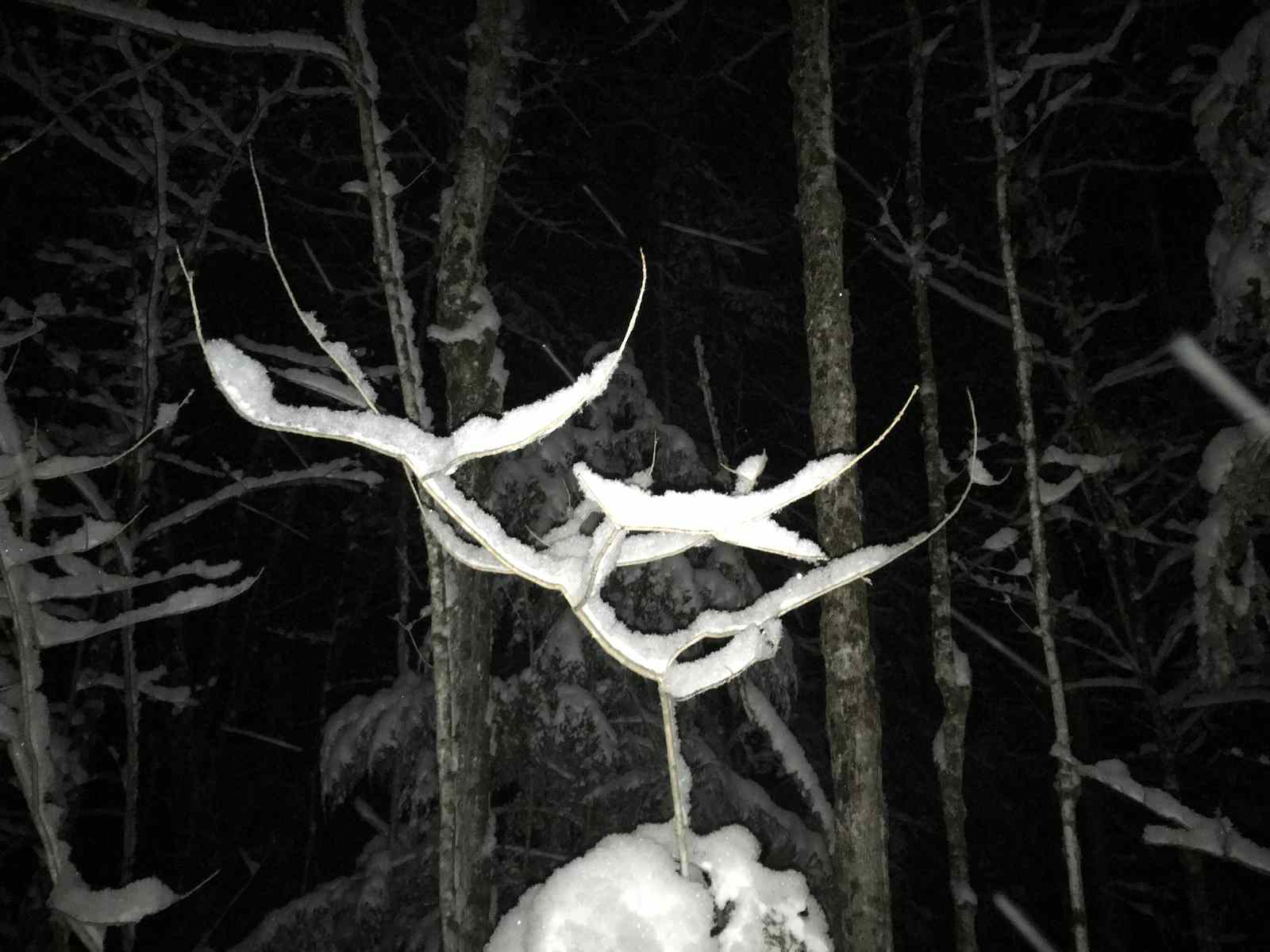
One thing that will help you pay more attention to details is a camera. If you’re scanning your surroundings with photography in mind, you’ll be more likely to notice interesting things. With a camera in hand, you will focus on photographing things that are beautiful, intriguing; things you want to capture and remember.
By taking time to notice the details around you, you can get out of your own head for a little while and clear your mind of the day’s troubles.
3.
Be curious
Put on your detective hat and question everything. What kind of fish is this? How did it end up on a Lake Ontario beach?
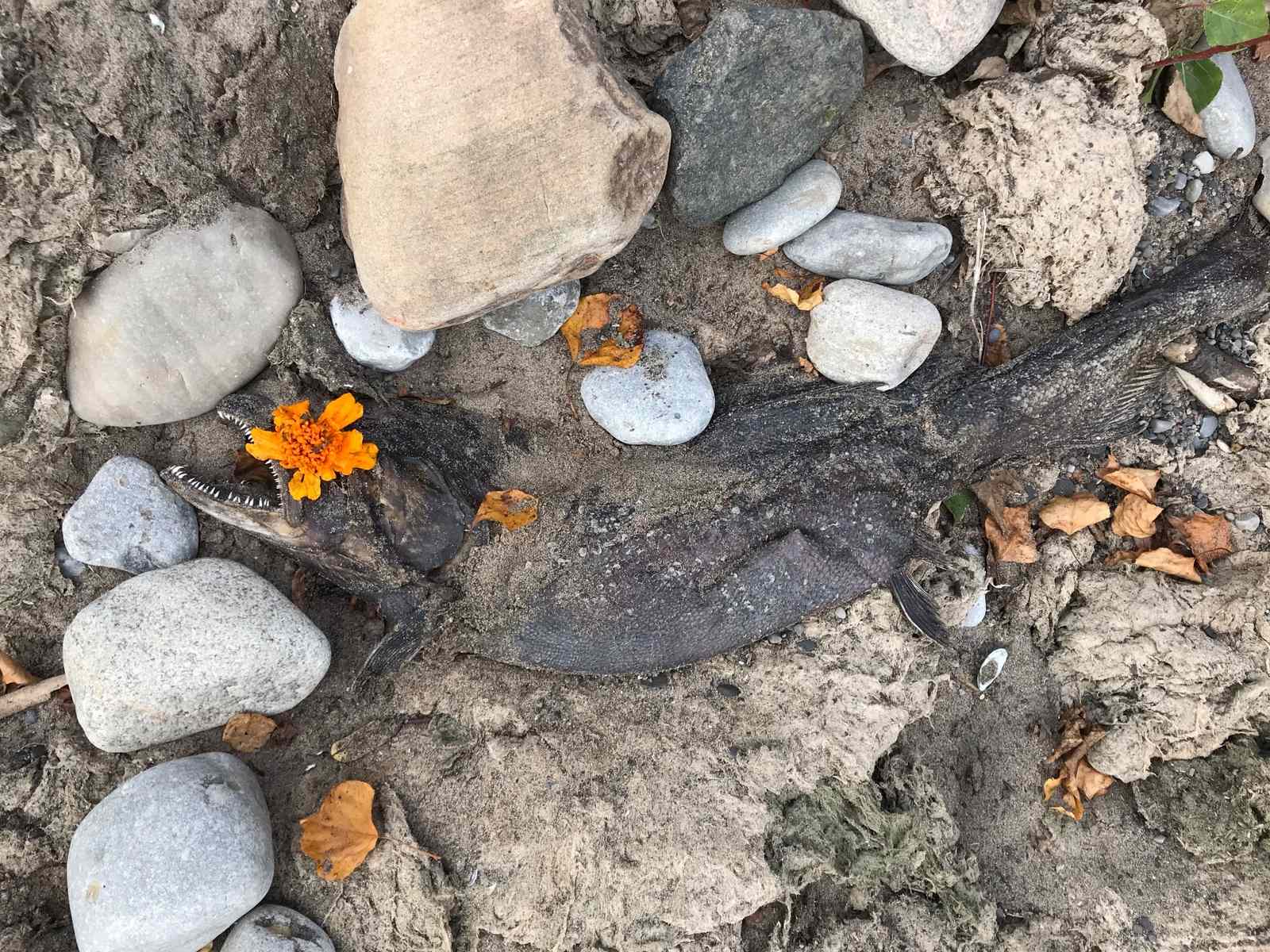
Get googling or get in touch with a local expert. My Swim Drink Fish co-workers were kind enough to let me know that this is a salmon that probably died after spawning.
And what about this handsome little fella staggering around on the sidewalk like a drunken sailor? What’s his deal?
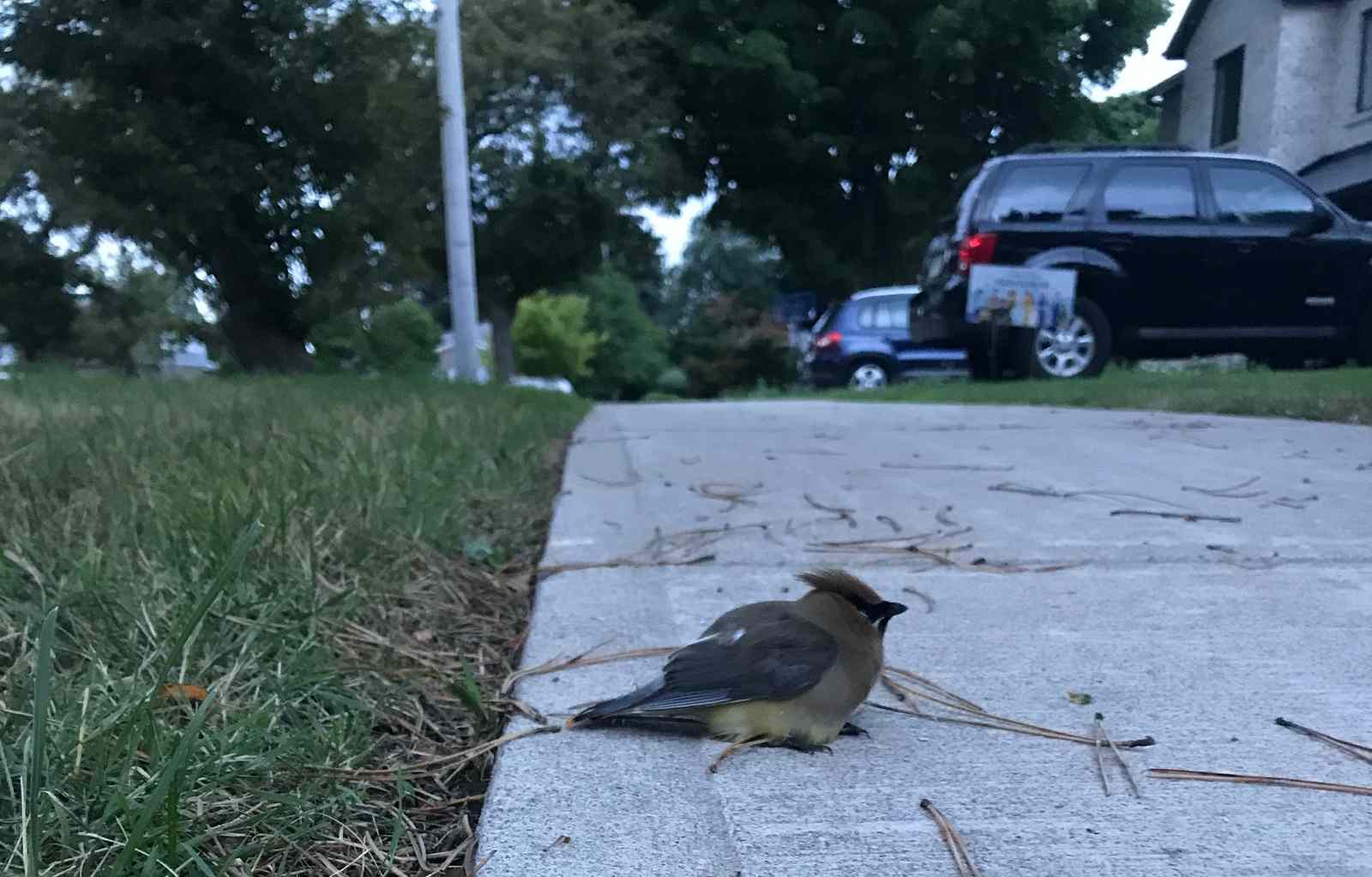
Well, this just so happens to be a Cedar Waxwing. Sometimes, they eat overripe, fermented berries and inadvertently get drunk as a skunk.
Then there’s this thing...
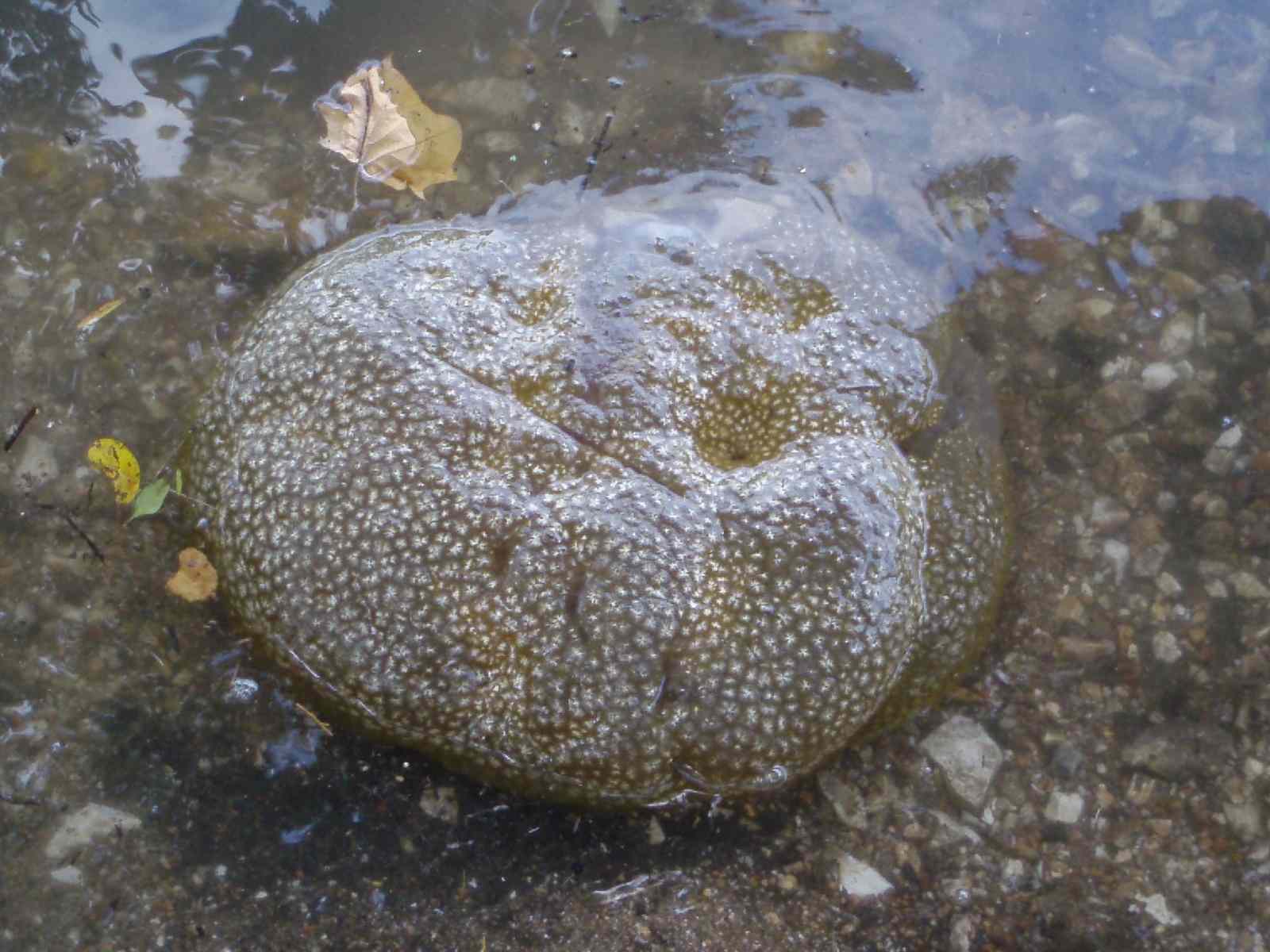
The first time I saw one in a lake, I thought I'd stumbled across the set for a monster B-movie. Some quick online research showed me I had nothing to fear... in fact the opposite!
This is actually a colony of tiny filter-feeding aquatic invertebrates called bryozoan. Bryozoans (or as my dad likes to call them, ‘brain-ozoans’) are in fact an indicator of healthy water! They clean water as they feed, but they can’t survive long in polluted waters.
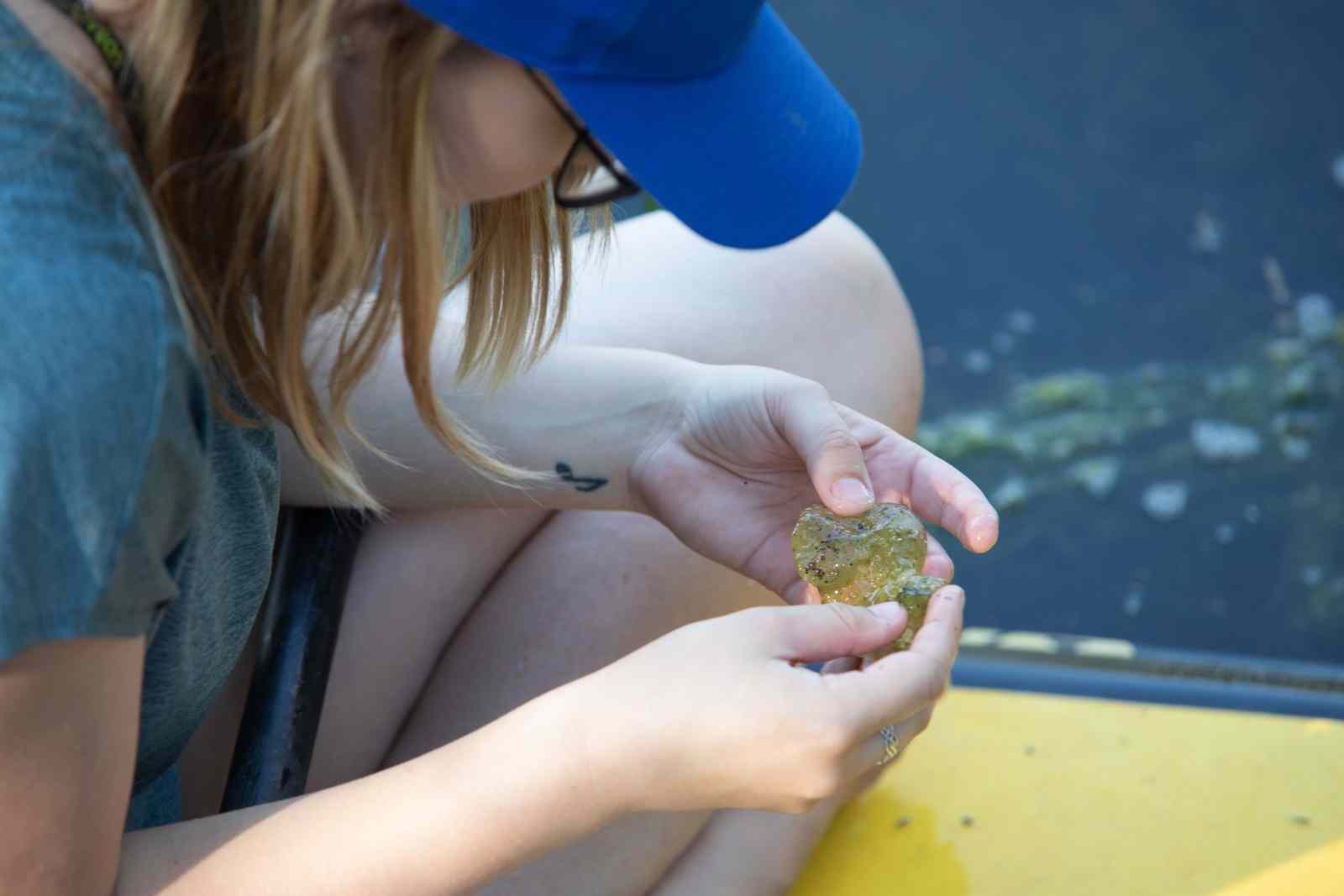
Tip: iNaturalist is a great way to record your observations, share them with other nature-lovers, and discuss what you find.
4.
Let your mind wander and reflect
There’s a reason that so many of the best poems and novels use nature as a looking glass into the human condition. If you reflect on the natural world, you’ll find universal truths and wisdom that may help you navigate your own life.
For example, in this poem by my grandmother:
At Water’s Edge
My moccasins are touched now by the rising sun.
You share the rock; roots spreading out and down.
We’d both be broken if a hurricane hit.
What do you think?
Are those who move from place to place more likely to be struck by one?
I know but little of your world; and you much less of mine.
Your outlook changing only as you’ve added height.
I gather vistas like a bee collecting dust.
What do you think?
Are those who move from place to place more likely understanding life?
For forty years, we’ve shared the lake.
Time takes its toll on both of us and who is stronger
I’m hard pressed to say. We both have scars.
What do you think?
Are those who move from place to place likely dying far too soon?
You stand fast but would I rather stay or go?
Things change for me. It’s hard to know.
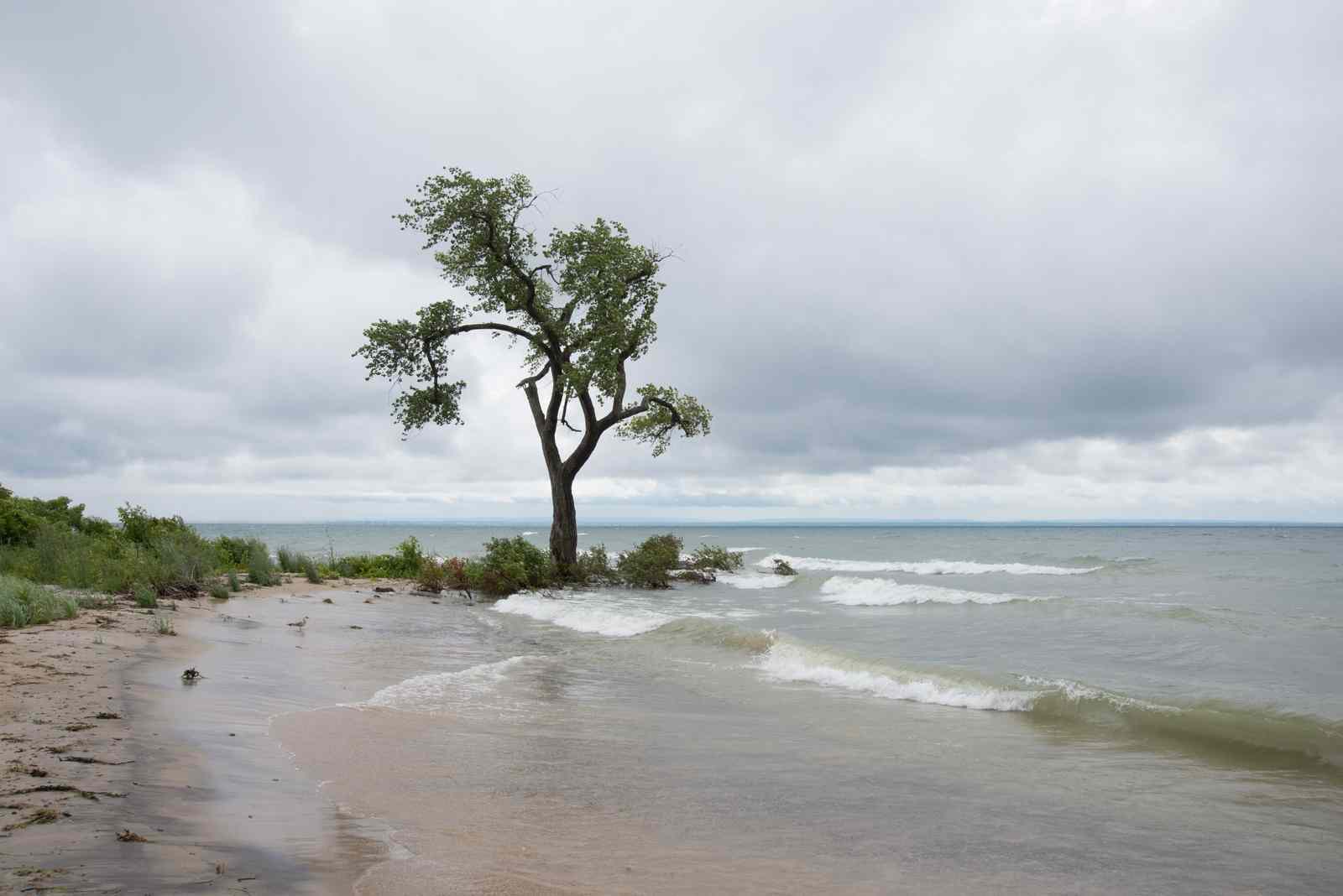
Whether you reflect on the changing of the seasons and its never-ending cycle of new life, or the ferocious storms that nurture the ground, our natural environment is full of lessons.
In the words of Sadie Caron, the Program Manager at Swim Drink Fish:
“For times where I only have 10 minutes to get outside and absorb some vitamin D and serotonin, I like to do mindfulness breathing for a few minutes, reflecting on how trees, plants, and algae are all breathing together with me. As I'm exhaling CO2, the trees are transforming my own breath into oxygen, fuelling my body to help become more productive and more at peace with the world around me.”
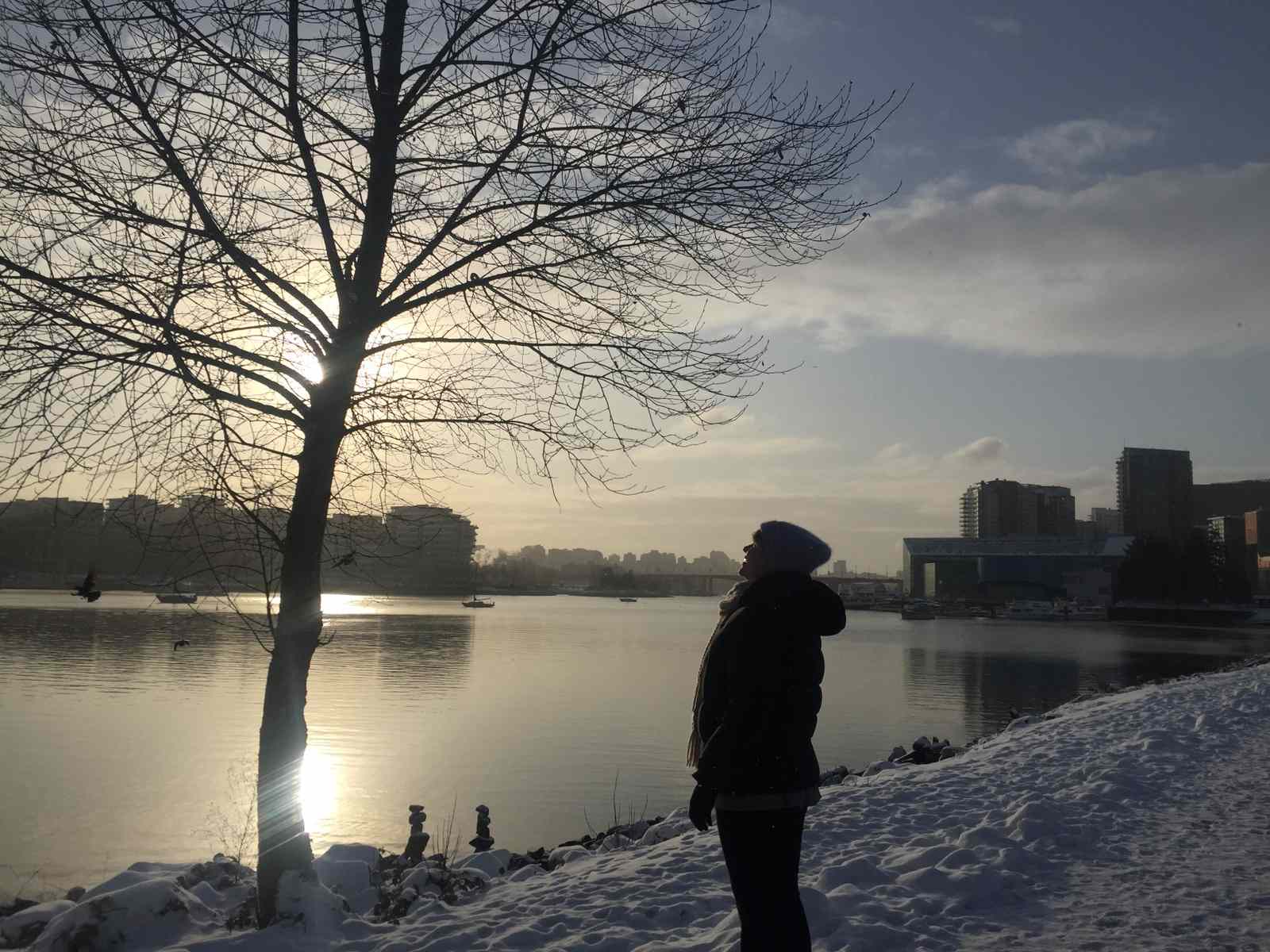
5.
Give back to the spaces that give you so much
While you’re practicing self-care in nature, show nature a little tender loving care too. This can be something as simple as moving a bug or earthworm off the trail or picking up litter that you see near the water.
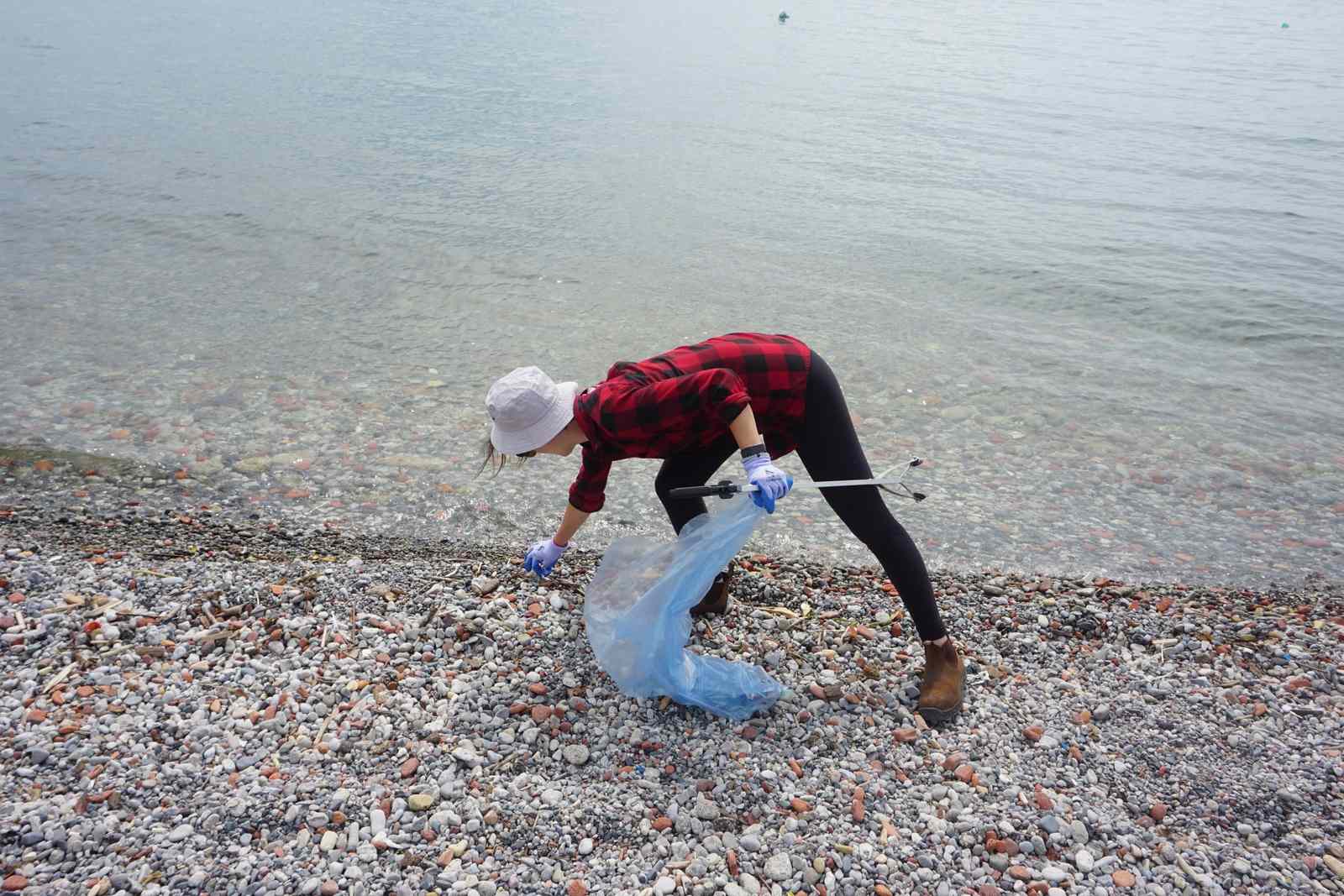
To take your good deeds one step further, become a citizen scientist by helping us track what’s in your waters! Feed Gassy, our friendly AI lake monster. She digests all the photos you upload of what you see by the water, whether that’s wildlife, people, or pollution.
With your help, we can collect crucial water health data.

Studies have shown that doing good deeds and going outdoors makes us feel happier.
It’s also important for us to connect with the lakes for the health of the lakes themselves. Always leave your favourite natural space a little bit better than you found it as you reap the mental health benefits the Great Lakes have to offer.
Related
Activity:
Birding, Hiking, Learn About Nature, Relax, Swimming, Winter Activities
